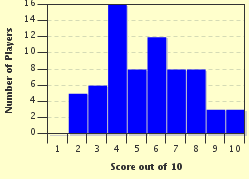Quiz Answer Key and Fun Facts
1. When most people say "solitaire", especially in the USA, they mean this game. I must move the cards from the seven columns of the tableau to the foundations. Then I turn over the stock three cards at a time into the waste pile for additional cards. What is this classic game?
2. Not sure why I've selected this one, as it was originally a casino game, and therefore has one of lowest win probabilities of all solitaires. Still, I will try to move the cards from the four-column tableau onto foundations (not necessarily starting with Aces). Across the pond in the UK, they call it Demon, but I'm playing in the USA. How is this game known here?
3. First I arrange 12 specific cards in a circle as shown in the diagram (the foundations); I deal the remaining 40 cards in eight columns. Without explaining much further, I think we can study the illustration and guess the name of this fun patience game!
4. Some skill is needed to win this fan-type solitaire game, with pretty maids all in a row, and move the all cards from the tableau and the reserve to the foundations, Ace to King. Study the picture and tell me, what is the name of this patience game? (Click on the picture to enlarge, if necessary).
5. Sometimes one deck just isn't enough. I've shuffled two decks (104 cards) and dealt out 50 in ten piles. I move them around the tableau, building down in sequence, ideally of the same suit. I'm trying to get all 13 in one suit in a column, which I can then remove. What is this difficult game?
6. Here is an adding and pairing game that reminds me of Egypt. To win, remove all the pairs from the tableau and from the stock. Judging by the tableau, I'd say this game is called...
7. The Golden Bear showed me this game and told me I must try to earn the lowest number of points over the course of nine deals, as I move each card to one in sequence, higher or lower, regardless of color, and then hopefully to the Foundation. And no Mulligans (re-deals)!
8. Now I will play one of my favorites. I deal all cards onto the tableau in four rows. I remove the Aces. Now, I shift the cards around the tableau by moving them in sequence by suit to fill the gaps. For example, I can place the Eight of Hearts behind the Seven of Hearts in the first row. This leaves a gap behind the Queen of Hearts in the bottom row which can be filled by the King of Hearts, etc. One name of this game is Montana, and another one is...what?
9. Here is one sometimes called "FreeCell without cells"; but unlike FreeCell, it is all but impossible to win. I deal out the Aces vertically and then the rest of the deck as illustrated. The top card of each cell goes on another cell's top card or on the foundation. One name for this game is Beleaguered Castle; another name reflects the likelihood of losing this frustrating game, hence its pointlessness. What is it called?
10. My last patience game is a member of the FreeCell family, in which very few games are unsolvable, so I play them to minimize frustration.
The first card dealt, in the tableau, is the beak (the Five of Spades in the illustration); this determines the foundations. The reserve spaces are the flipper (the seven cells). I must try to release the beak and build the foundations. Given this terminology, what is this game?
Source: Author
gracious1
This quiz was reviewed by FunTrivia editor
WesleyCrusher before going online.
Any errors found in FunTrivia content are routinely corrected through our feedback system.

